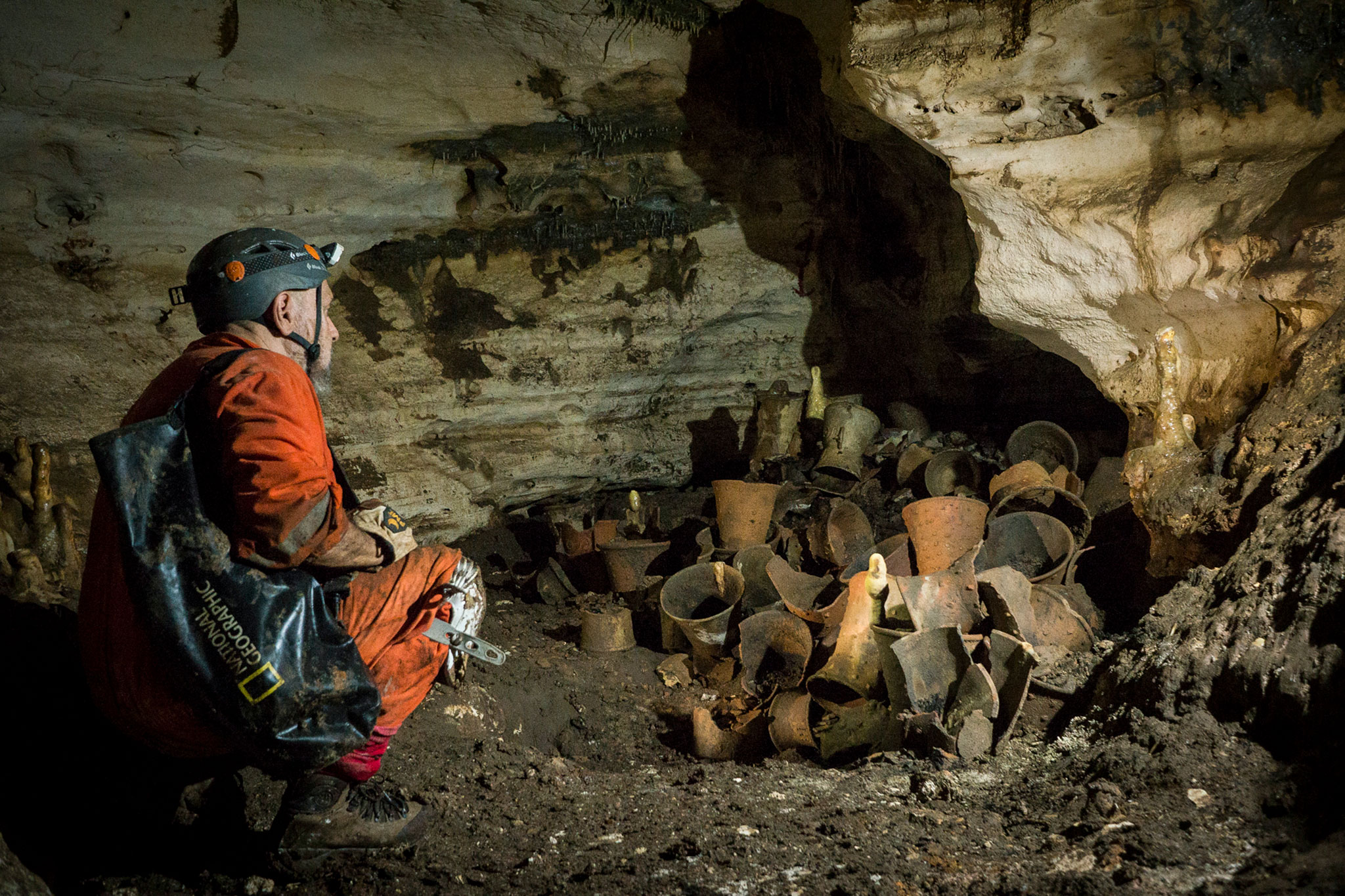 National Geographic Explorer Guillermo de Anda examines a cache of ritual vessels inside the Balamku (Jaguar God) cave in Yucatán, Mexico. The objects have been untouched for at least 1,000 years.
National Geographic Explorer Guillermo de Anda examines a cache of ritual vessels inside the Balamku (Jaguar God) cave in Yucatán, Mexico. The objects have been untouched for at least 1,000 years.
Karla Ortega
Archaeologists hunting for a sacred well beneath the ancient Maya city of Chichén Itzá on Mexico’s Yucatán Peninsula have accidentally discovered a trove of more than 150 ritual objects—untouched for more than a thousand years—in a series of cave chambers that may hold clues to the rise and fall of the ancient Maya.
Balamku remained sealed for more than 50 years, until it was reopened in 2018 by National Geographic Explorer Guillermo de Anda and his team of investigators from the Great Maya Aquifer Project during their search for the water table beneath Chichén Itzá. Exploration of the system was funded in part by a grant from the National Geographic Society.
“Balamku can tell us not only the moment of collapse of Chichén Itzá. It can also probably tell us the moment of its beginning.”
Guillermo de Anda, National Geographic Explorer
Learn more about this amazing archaeological discovery and how it changes our understanding of Maya civilization here.
Exclusive Visuals and Interviews Available
Guillermo de Anda, National Geographic Explorer and lead archaeologist, is available for interviews out of Mexico City, Mexico.
Kristin Romey, National Geographic archaeology expert, is available for interviews out of Washington, D.C.
Please contact Anna Kukelhaus, Anna.Kukelhaus@natgeo.com, and Kelsey Taylor, Kelsey.Taylor@natgeo.com, for image and interview requests.